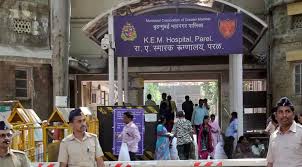
Donor: Dr. Malpani, I’ve always respected the work municipal hospitals like KEM do. They treat lakhs of poor patients with very limited resources. But I’ve also heard their infrastructure is in bad shape. Why is that?
Dr. Malpani: You’re right. KEM is my alma mater, and I am justly proud of it. Institutions like KEM are the unsung heroes of Indian healthcare. They don’t just provide high-quality, affordable care to the poorest patients; they also train the next generation of doctors and offer unmatched opportunities for clinical research, given the sheer patient volume. Sadly, they remain chronically under-funded.
Donor: That’s frustrating. How can I help ?
Dr. Malpani: People like you who want to make a lasting difference can step in. Municipal hospitals have an incredible potential to do even better with the right infrastructure and technology. The gap today isn’t in medical expertise or dedication—it’s in funding for medical technology, research, and patient comfort.
Donor: I’ve seen how U.S. hospitals or universities name entire wings or departments after major donors. Does that happen in India?
Dr. Malpani: Rarely, but it should happen much more. It’s standard practice abroad. It’s also routine in the IITs , which have flourished because of these donations. Many of their growth stories are fuelled by visionary donors who gave back to institutions that shaped their lives. We can, and should, adopt this approach for government hospitals too.
Donor: What does that look like in practice?
Dr. Malpani: You can directly donate to a hospital like KEM through structured grants. These can be routed as part of your company’s CSR initiatives or even as a personal contribution. For example, you can fund the renovation of a ward, upgrade an ICU, purchase life-saving equipment, or set up a new research laboratory. In gratitude, the hospital can name the department or ward after you or someone you want to honour.
Donor: That’s an incredible way to create a legacy. Is there a minimum amount for such contributions?
Dr. Malpani: Typically, significant contributions start from ₹5 crores or more, especially if naming rights are involved. But even smaller donations can make a huge impact when pooled effectively. The beauty of giving to a government hospital is that your money stretches much further because of the volume of patients they serve. You’re not just improving care for hundreds—you’re impacting millions over decades.
Donor: I love the idea of creating something that outlives me and helps so many people. What about the worry that the money won’t be used properly?
Dr. Malpani: That’s a valid concern. The key is to work closely with hospital administrators and set clear terms for the grant, including oversight and milestones. Many donors also choose to create endowments that are carefully monitored. And when respected community members like you lead the way, it inspires transparency and accountability.
Donor: You’ve definitely given me a lot to think about. How can I get started?
Dr. Malpani: Begin by reaching out to the dean or medical director of the hospital you want to support. You can also work with foundations that specialize in medical philanthropy. I’m happy to guide you or connect you to the right people. Please email me ! Remember, this is about transforming lives at scale—and creating a healthcare legacy that reflects your values.
Donor: Thank you, Dr. Malpani. I’m excited to explore this further!
Dr. Malpani: Thank you! It’s visionary donors like you who will help rewrite the future of public healthcare in India. Let’s lead by example.